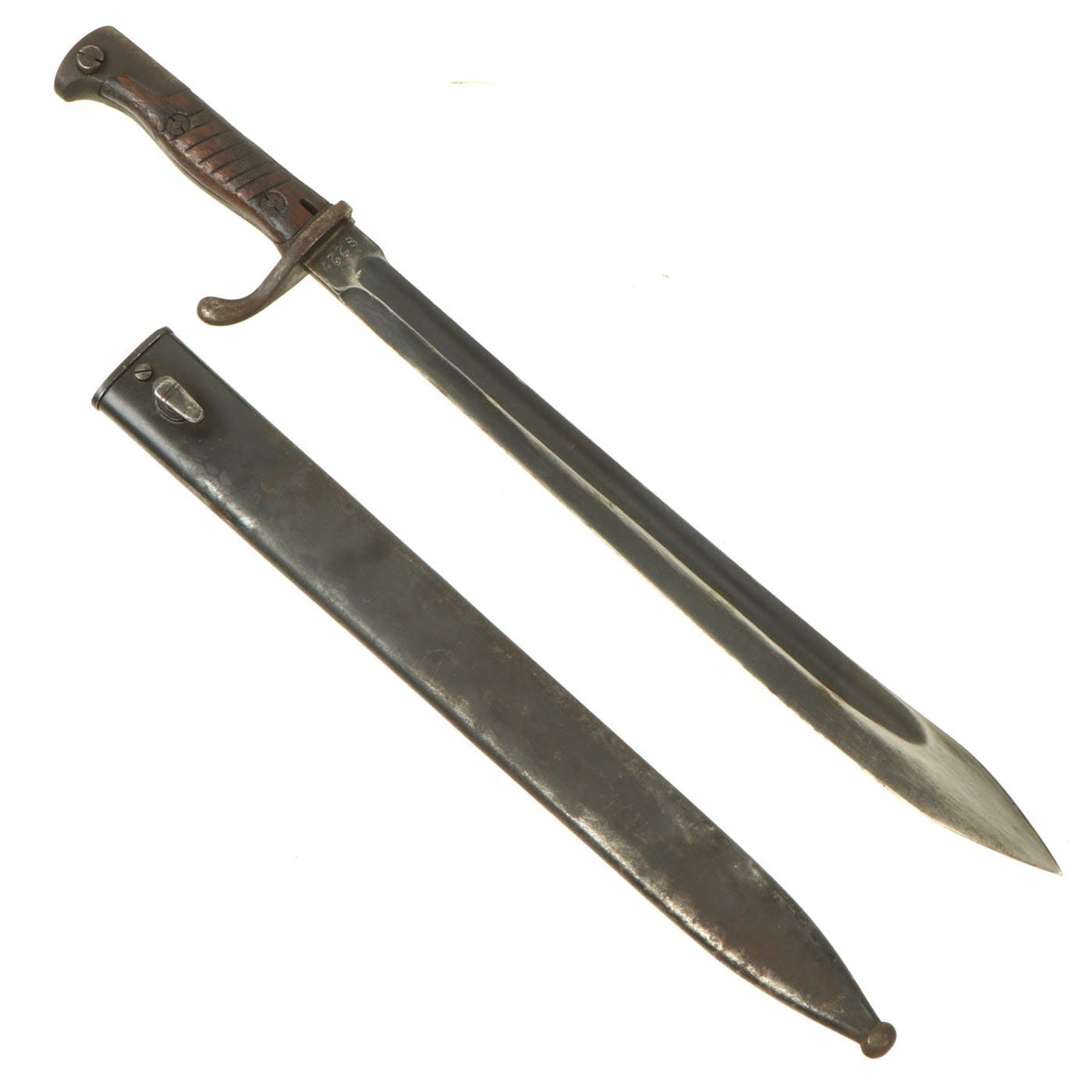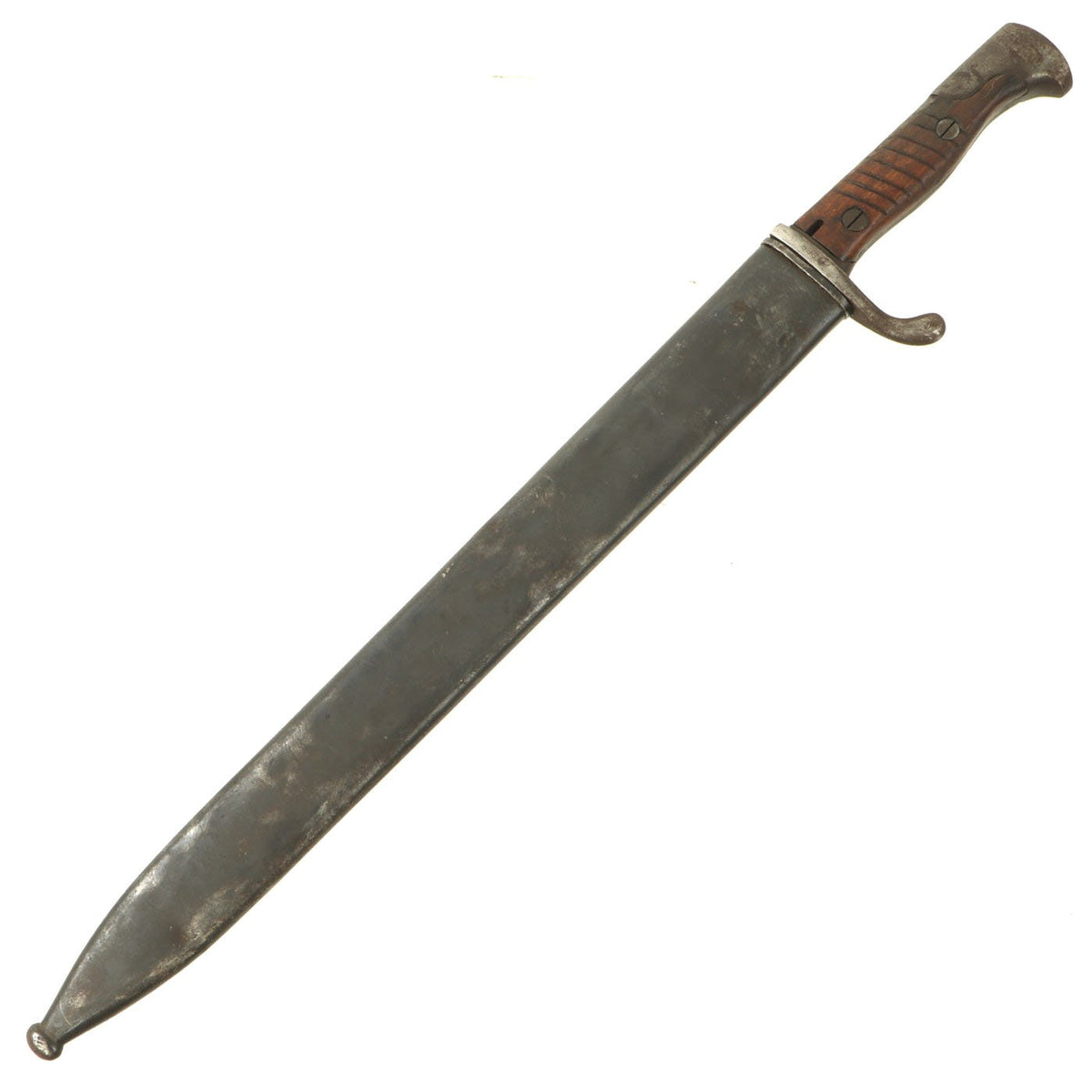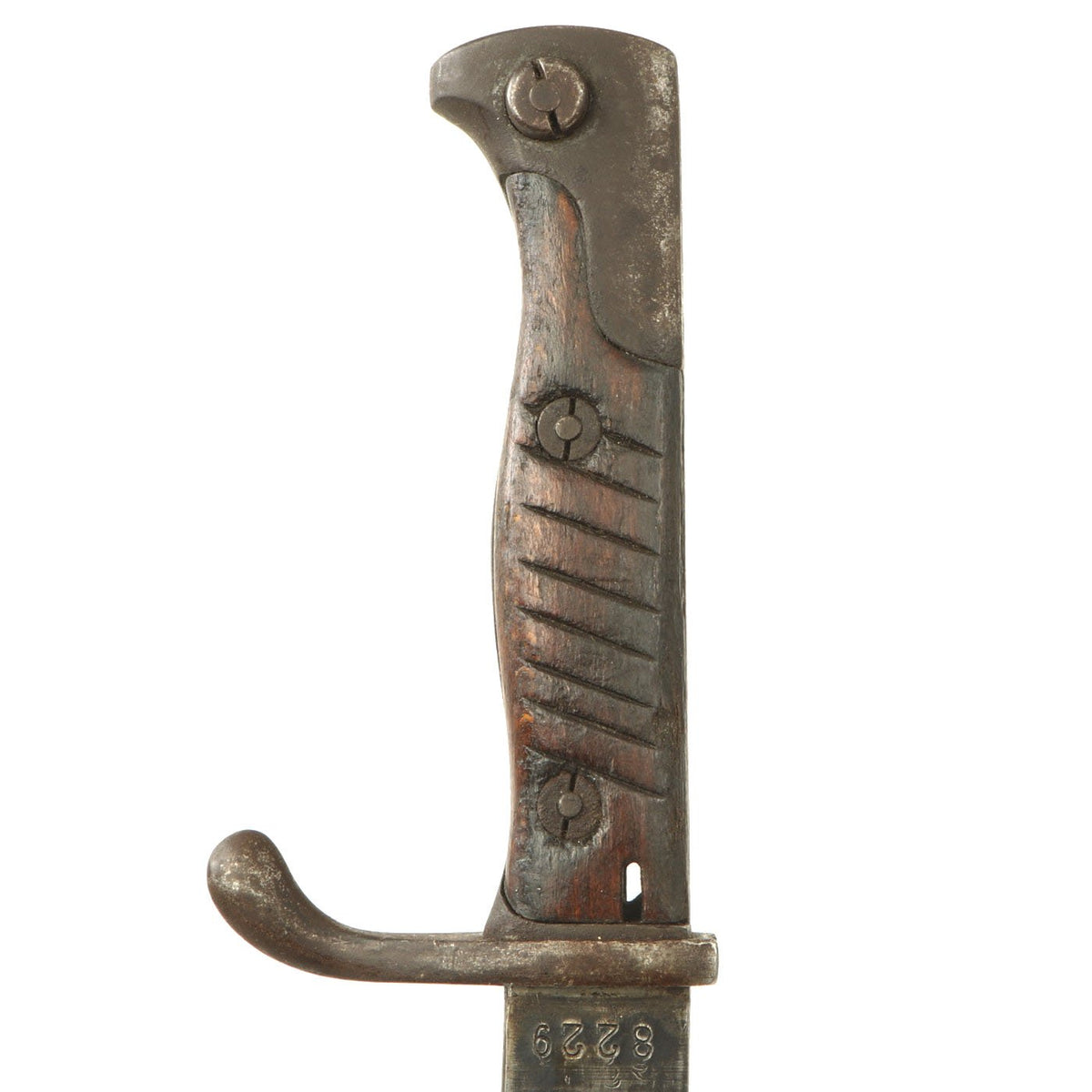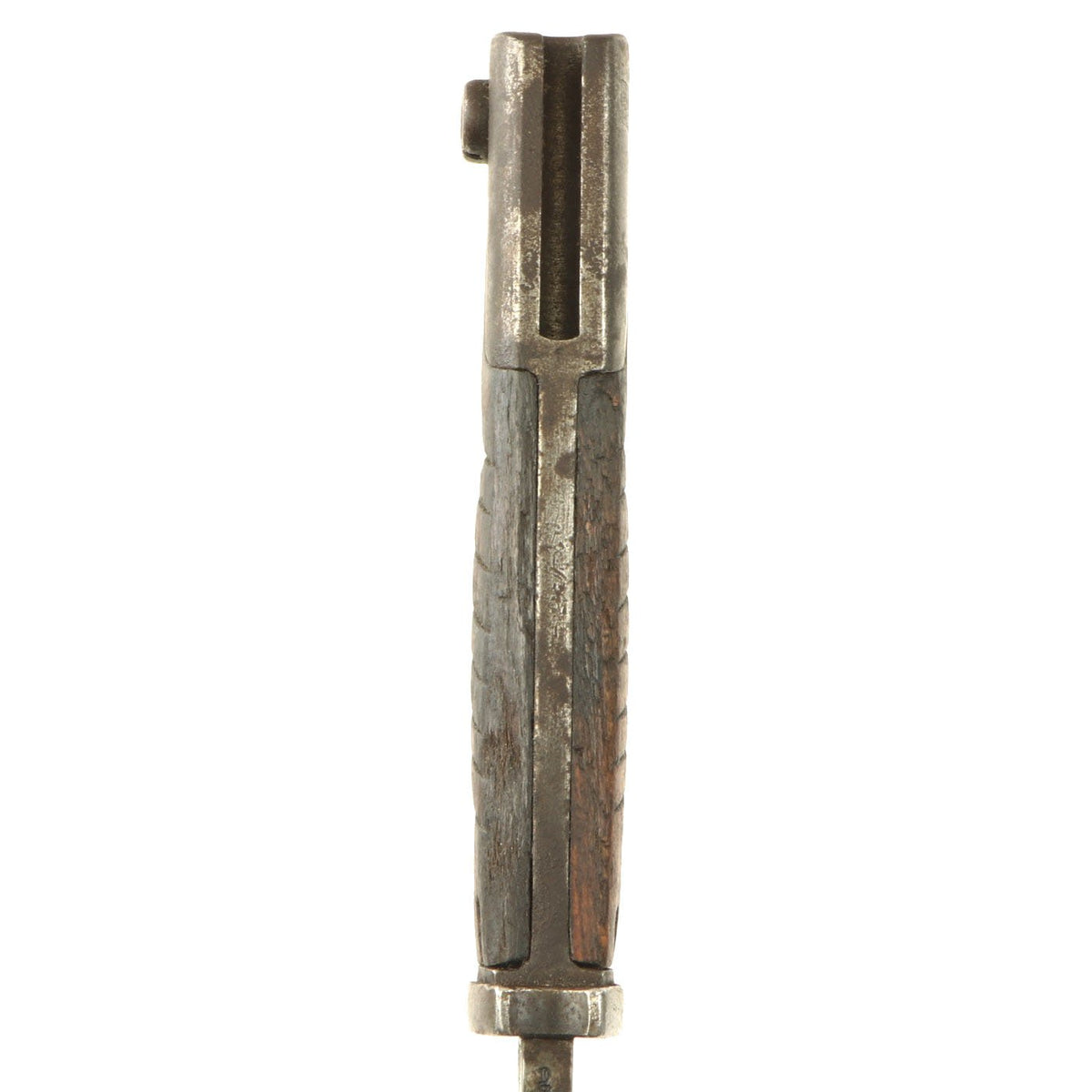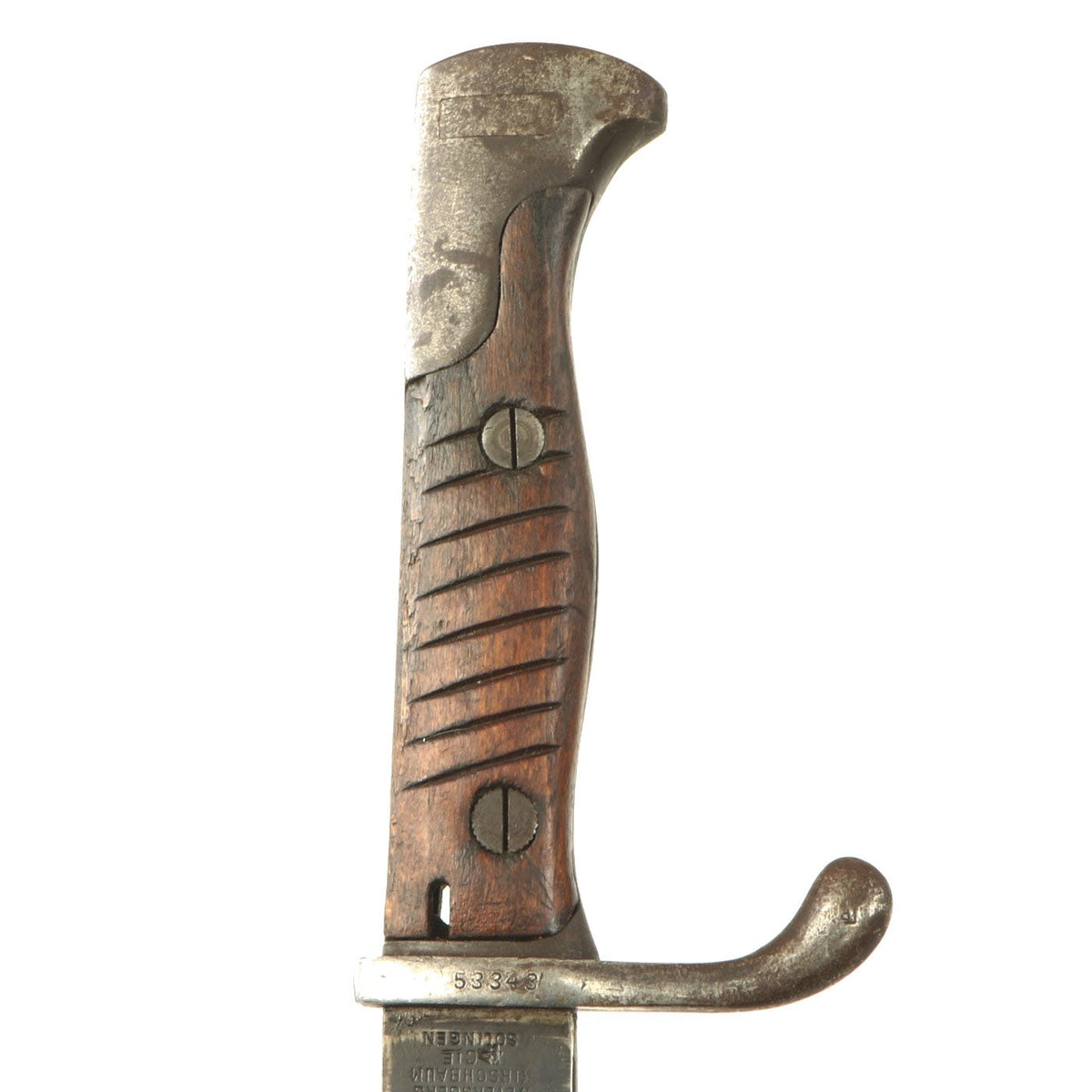Original German WWI M1898/05 n/A “Sanitized” Butcher Sawback Bayonet by WKC with Scabbard – Dated 1915 Original Items
$ 195,00 $ 78,00
Original Item: Only One Available. This is a good example of the M-1898/05 Bayonet (Seitengewehr), which was the most common German Bayonet of the First World War. It was intended for use on the standard issue service rifle of Imperial Germany: the Mauser-designed Gewehr 98 (GEW 98). It features a heavy 14.5-inch steel blade with distinct bulge toward the point, giving extra weight and power to the business end, known as a “butcher blade”. This version is known as n/A (neuer Art = newer model). This second pattern lacks the first pattern’s vestigial muzzle ring (or ‘ears’) and has a flashguard on the back of the grip.
This example was originally produced with the a “sawback” blade, which was intended for use by pioneers to saw through brush and obstacles. Unfortunately a rumor got out that it was intended to inflict grievous harm on enemies. It got to the point that many Germans believed that the British summarily executed all Germans found carrying sawback bayonets when captured, so a lot of the sawback bayonets had this feature removed. This would have been quite ironic, since the sawback bayonet was originally first a British development. While this example no longer has the “saw back”, it can clearly be seen that it originally did have one, now ground away, thankfully leaving the markings on the spine intact.
This example has a very nice set of original grooved wood grips, with denting and some small chips from wear. The hilt and crossguard are solid, though the finish is worn to a grayish patina from use and age. Bayonet lock is fully functional. The blade ricasso is maker marked:
WEYERSBERG
KIRSCHBAUM
& CIE
SOLINGEN
This company is a famous manufacturer of military swords and cutlery in Solingen, Germany – a city famous since the middle ages for its metal-working and craftsmanship in sword making. Per J. Anthony Carter’s fine work GERMAN SWORD AND KNIFE MAKERS, the traditional manufacturing of swords at WKC dates back to the year 1774 when the Weyersberg first registered the ”Kings head” as their trademark. Later in 1883 the company merged with the Kirschbaums and the company WKC was formed as it exists today. It was heavily involved with exporting edged weapons to South American countries in the late 19th and early 20th century.
The blade is also dated on the blade’s spine 15 under a proof mark of a Crown over W., for Kaiser Wilhelm II, and the year the bayonet was accepted. There are additional markings on both sides of the cross guard. The blade is in very good condition, except for the missing saw back. It has a nice arsenal refinish, which has worn through in some places, but still looks quite nice. The steel scabbard is in good condition, with a lot of the original finish, but also a lot of denting and scuffing to the exterior. This does not interfere with sheathing the bayonet.
A very nice example of the unfortunately fate of many rare Butcher “Sawback” bayonets from the First World War. Ready to display!
Dimensions:
Blade length: 14 1/2”
Blade Style: Single Edged “Butcher” with Fuller
Overall length: 19 3/4”
Crossguard: 2 3/4”
Scabbard length: 15 1/4″
Fast Shipping with Professional Packaging
Thanks to our longstanding association with UPS FedEx DHL, and other major international carriers, we are able to provide a range of shipping options. Our warehouse staff is expertly trained and will wrap your products according to our exact and precise specifications. Prior to shipping, your goods will be thoroughly examined and securely secured. We ship to thousands clients each day across multiple countries. This shows how we're dedicated to be the largest retailer on the internet. Warehouses and distribution centres can be located throughout Europe as well as the USA.
Note: Orders with more than one item will be assigned a processing date depending on the item.
Before shipping before shipping, we'll conduct a thorough inspection of the items you have ordered. Today, the majority of orders will be delivered within 48 hours. The delivery time will be between 3-7 days.
Returns
The stock is dynamic and we cannot completely manage it because multiple stakeholders are involved, including our factory and warehouse. So the actual stock may alter at any time. It's possible that you may not receive your order once the order has been made.
Our policy is valid for a period of 30 days. If you don't receive the product within 30 days, we are not able to issue a refund or an exchange.
You can only return an item if it is unused and in the same state as the day you received it. You must have the item in its original packaging.
Related products
Uncategorized
Uncategorized
Angolan Rebel 1970s era 60mm Inert Display Mortar from Angolan Civil War Original Items
Uncategorized
Band of Brothers ORIGINAL GERMAN WWII Le. F.H. 18 10.5cm ARTILLERY PIECE Original Items
Uncategorized
Uncategorized
Uncategorized
Uncategorized
Uncategorized
Uncategorized
Uncategorized
Uncategorized
Uncategorized
Uncategorized
Uncategorized
Armoured Fighting Vehicles of the World: AFVs of World War One (Hardcover Book) New Made Items
Uncategorized
Uncategorized
Uncategorized
Uncategorized
Armored Burgonet Helmet & Polearm from Scottish Castle Leith Hall Circa 1700 Original Items
Uncategorized
Uncategorized

